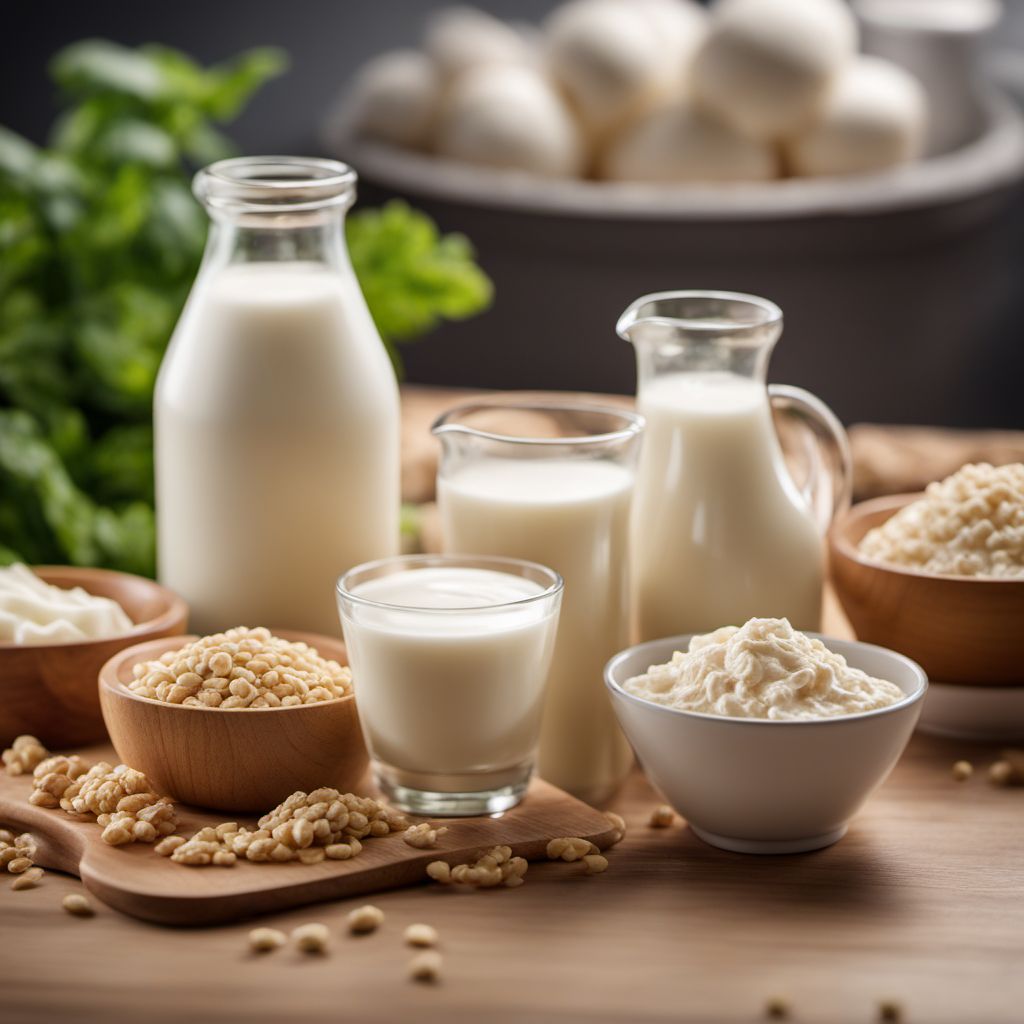
Ingredient
Dairy imitates
Plant-Based Alternatives: The Rise of Dairy Imitates
Dairy imitates are non-dairy products that mimic the taste, texture, and appearance of traditional dairy items such as milk, cheese, butter, and yogurt. Made from plant-based ingredients like nuts, seeds, legumes, or grains, these imitates provide a viable option for those who are lactose intolerant, allergic to dairy, or following a vegan or vegetarian diet. They come in various forms, including milk alternatives, cheese substitutes, and plant-based spreads, and offer a wide range of flavors and textures to suit different culinary needs.
Origins and history
The concept of dairy imitates dates back centuries, with early examples of non-dairy milk alternatives being used in Asian and Middle Eastern cuisines. However, the modern popularity of dairy imitates can be attributed to the growing demand for plant-based products and the increasing awareness of the environmental impact of animal agriculture. Over the years, advancements in food technology and innovation have led to the development of a wide variety of dairy imitates, making them more accessible and appealing to a broader consumer base.
Nutritional information
Dairy imitates are often fortified with essential nutrients such as calcium, vitamin D, and B vitamins to match the nutritional profile of dairy products. They are generally lower in saturated fat and cholesterol compared to traditional dairy, making them a healthier alternative for individuals looking to reduce their intake of animal fats.
Allergens
Dairy imitates may contain allergens such as nuts, soy, or gluten, depending on the specific product. It is important to check the ingredient list and allergen labeling before consuming.
How to select
When selecting dairy imitates, look for products that are made from high-quality plant-based ingredients and are free from artificial additives or preservatives. Opt for options that are fortified with essential nutrients and have a taste and texture that suits your preferences.
Storage recommendations
Dairy imitates should be stored according to the instructions provided on the packaging. Most milk alternatives and cheese substitutes can be refrigerated and should be consumed within a certain period after opening to maintain freshness. Plant-based spreads should be stored in a cool, dry place.
How to produce
Amateur producers can make dairy imitates at home by blending soaked nuts, seeds, or legumes with water and straining the mixture to obtain a milk-like consistency. Various recipes and tutorials are available online for making homemade dairy imitates.
Preparation tips
Dairy imitates can be used in a variety of ways, such as in smoothies, baking, cooking, or as a topping for dishes. When using milk alternatives in recipes, it is important to consider the flavor and consistency of the specific product and adjust the quantities accordingly. Cheese substitutes can be melted, grated, or sliced for use in sandwiches, pizzas, or pasta dishes. Experiment with different brands and types of dairy imitates to find the ones that best suit your culinary needs.
Culinary uses
Dairy imitates are commonly used as substitutes for traditional dairy products in a wide range of dishes and cuisines. Milk alternatives can be used in coffee, tea, cereals, or as a base for smoothies and desserts. Cheese substitutes can be used in sandwiches, salads, pasta dishes, or as a topping for pizzas. Plant-based spreads can be used as a spread on bread, crackers, or as an ingredient in recipes that call for butter or margarine.
Availability
Dairy imitates are widely available in grocery stores, supermarkets, and health food stores in many countries around the world. They can also be purchased online, offering a convenient option for those who may not have access to physical stores.

